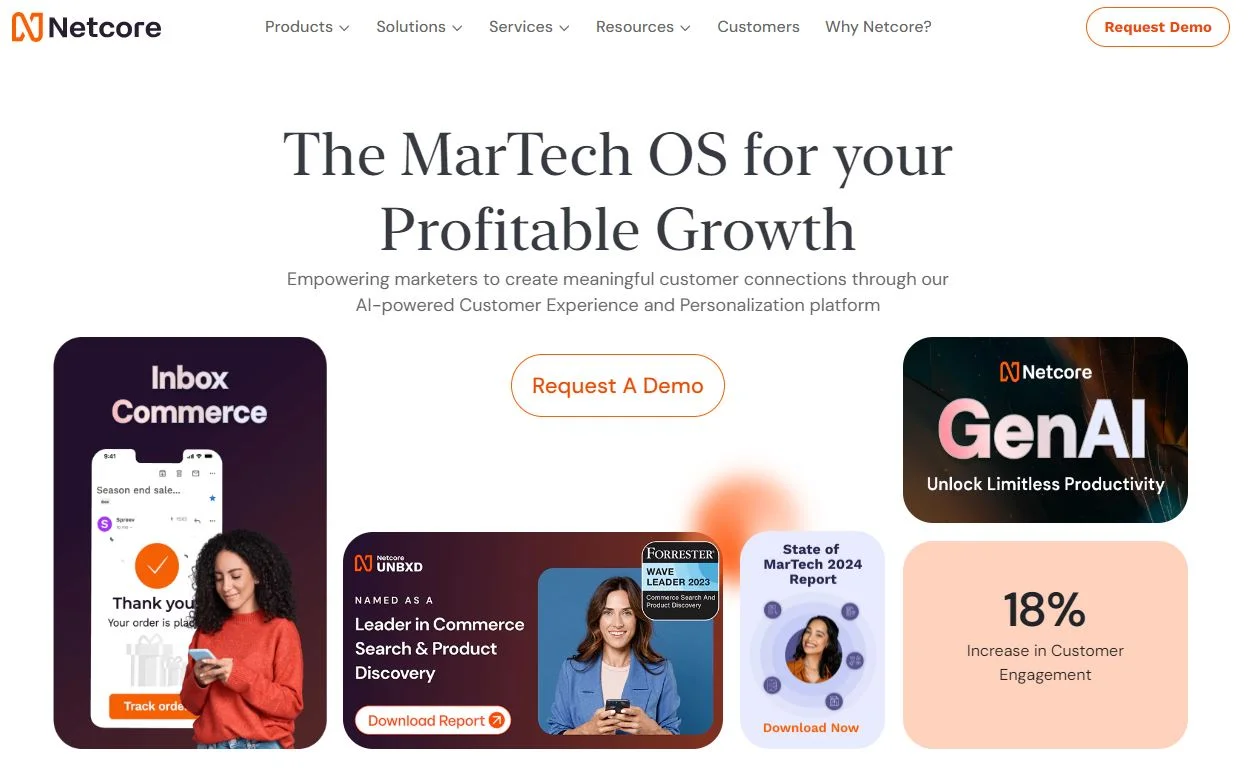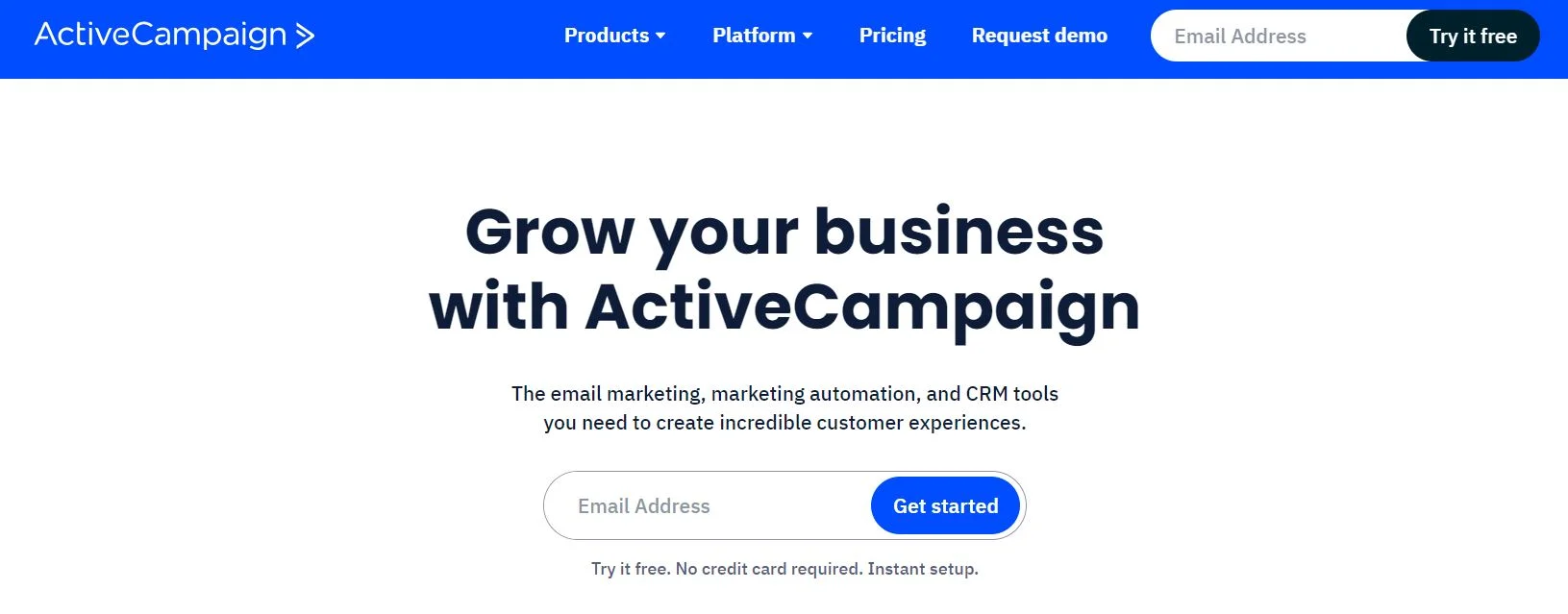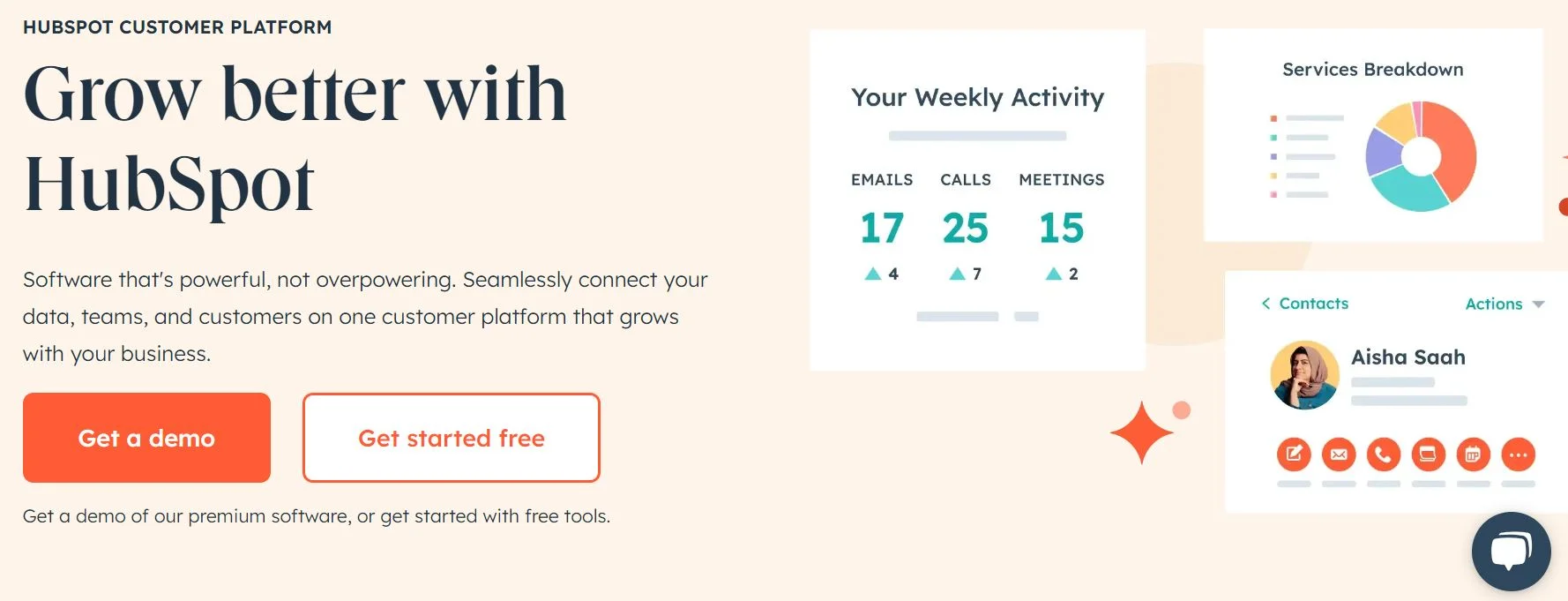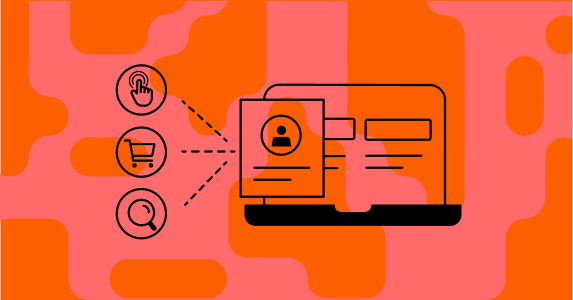Did you know the average customer checks out over seven touchpoints before purchasing? And guess what? Their preferences shift every time they look. That’s where the magic of customer engagement software comes in handy.
With the right customer engagement software, every conversation with a customer is a chance to impress and convert. The tool simplifies managing these interactions by bringing them all onto one single platform.
However, choosing the best customer engagement software for your online marketing campaigns can be overwhelming.
In this blog, we’ve carefully chosen the best software to make the decision easier for you.
What is Customer Engagement Software?
Customer engagement software enhances interactions between your brand and customers, aiming to deepen relationships beyond mere transactions.
These interactions can occur across various communication channels, such as email, WhatsApp, SMS, RCS, push notifications, and more. They’re designed to create a positive, emotional bond, encouraging conversions, repeat business, and positive referrals.
By understanding and responding to customer needs and feedback, customer engagement software helps create personalized experiences, fosters loyalty and advocacy, and ultimately drives business success.
Why Use Customer Engagement Software?
The customer engagement software market is estimated to reach $36.74 bn by 2029 at a CAGR of 10.97%.
What does this mean? Marketers recognize the significance of customer engagement marketing in maintaining competitive advantage and driving business growth.
The software collects comprehensive data about your customers, building profiles that understand them better than they understand themselves. You can create effective customer engagement marketing strategies based on different customer segments, buyer journeys, and more.
When customers feel connected, the odds of them returning improve significantly. This helps retain them, increase sales, and create a positive reputation for your brand.
Top 12 customer engagement software to try in 2025
There are plenty of customer engagement software options out there. To simplify your decision, we’ve curated the top 12 for easy comparison.
| Software | Best Feature | G2 Rating |
| Netcore Cloud | AI-led omnichannel communication with in-channel conversions | 4.5 |
| Iterable | Cross-channel communication | 4.5 |
| ActiveCampaign | Advanced automation tools | 4.5 |
| Braze | Simplifies building and automating cross-channel campaigns | 4.5 |
| Airship | Strong focus on mobile experiences | 4.0 |
| Klaviyo | Email design capabilities | 4.6 |
| Hubspot Marketing Hub | Ad retargeting & CRM solution | 4.4 |
| Blueshift | Easy & intuitive interface | 4.4 |
| Customer.io | Flexible data model ensures easy data updates | 4.4 |
| Insider | Cross-channel journey builder | 4.8 |
| OneSignal | “Confirmed Delivery” feature to monitor notification delivery and permission changes accurately. | 4.6 |
| Twilio | Integrate voice, text, and video messaging capabilities into web and mobile applications. | 4.2 |
1. Netcore Cloud

Netcore Cloud is a comprehensive customer engagement platform designed to enhance the way B2C brands interact with their customers.
Here are some of the top features that Netcore offers that stand apart.
1. All-in-one marketing ecosystem
Netcore excels by offering a comprehensive, single-vendor ecosystem that streamlines your marketing by integrating tools like email, WhatsApp, SMS, push notifications, and analytics into one platform.
Key benefits include:
- A unified dashboard for all marketing activities.
- Reduced reliance on multiple third-party tools.
- Enhanced data accuracy and seamless event triggering.

2. Cutting-edge Personalization engine with Merchanding Triggers and Recommendations
Personalizing your customer’s experience is crucial. Netcore offers top-notch personalization that’s more than just creating basic banners. The platform’s no-code drag-and-drop capabilities allow you to craft campaigns to deliver custom experiences easily, even without a lot of technical know-how.
What’s better? This tool is perfect for tweaking both web and mobile apps to fit your marketing needs.
Here’s what you can do:
- Edit with Ease: Change your website’s content—think banners, images, text. Want to add something special like coupon drawers or unique banners? No problem.
- Dynamic Content: Show different content to different users based on their behavior, all in real-time.
- Playful Engagement: Hook your audience with fun interactive elements like spin-the-wheel or scratch cards—everyone loves a good game!
- Diverse Templates: Use a variety of templates, from Hello Bars to side coupons and FOMO tags, to keep things fresh and engaging.

For example, Amaro, a leading fashion retail brand witnessed revenue surge by over 10% using Netcore’s merchandising triggers.
3. Email & Interactive AMP Emails
Netcore’s email solutions are a benchmark in the industry! They’re packed with AI-driven optimizations for delivery, laser-focused segmentation, and AMP emails. These aren’t your average emails—think interactive surveys, scrolling product carousels, and even scheduling appointments right from your inbox. No need to click away; it’s all there in your email.
Why you should care: Brands that have switched to Netcore’s email tools have seen engagement rates soar by up to 20%. More engagement means more chances to connect and convert.

4. App Suite: Push Notifications & In-App Nudges
Netcore’s app suite includes everything from sending timely push notifications to sophisticated nudges. With these, you get not just more eyeballs on your notifications but more clicks, too.

What’s better is that Netcore’s customer engagement software also provides in-app nudges. Nudges aren’t just about notifications; they’re about guiding new users smoothly through your app, step by step, ensuring they find what they need and return for more.
They turn casual users into power users by engaging them just when it matters most. Plus, you can tweak things with A/B tests to see what features users love best. How cool is that?

Another key benefit is that Netcore owns all the communication channels for sending messages. This means you don’t have to rely on third-party applications or software to integrate with your website or app.
Netcore’s Co-Marketer AI engine is the latest innovation in the Netcore arsenal. By simply writing relevant prompts, you can create, iterate, and execute campaign journeys, as well as create dashboards. The co-pilot also helps create and provides deep insights into the content generated and how it will perform once implemented.
Book a live demo to explore how Netcore’s customer engagement platform actively boosts your brand’s engagement and drives conversions.
2. Iterable

Iterable is a customer engagement software that makes talking to your customers personal and direct across all platforms customers like to chat. This includes emails, texts, or pop-ups on your phone. They tell you what each customer likes and doesn’t like, so every message feels like it’s just for them.
Key features such as workflow automation, deep customer segmentation, dynamic content adaptation, and comprehensive analytics make Iterable a powerful tool for optimizing customer engagement strategies.
Iterable specializes in cross-channel campaign orchestration, allowing for complex campaign building across different channels.
It has a clean interface, which will make you confident and enjoyable to navigate. You can effortlessly organize your campaigns into folders and enhance them with tags and metadata, allowing you to keep your content well-structured.
3. ActiveCampaign

ActiveCampaign offers a marketing automation and customer experience (CX) tool under the umbrella of their Customer Experience Automation Platform (CXA). This platform goes beyond traditional marketing automation by focusing on the entire customer journey, from initial acquisition to post-purchase engagement and advocacy.
Imagine a customer engagement software that helps you connect with your customers on a deeper level, like remembering their preferences and sending them personalized messages. That’s what ActiveCampaign’s marketing automation and customer experience (CX) tools are all about.
ActiveCampaign excels in loading emails swiftly and accurately from a master database. You’ll appreciate how well-organized and fast it is, with templates available for all possible events.
It simplifies setting up complex procedures, enhancing your customer segmentation and email personalization. With the integrated CRM, you manage customer interactions more effectively and nurture leads with intuitive automation tools. These tools are invaluable for targeting your follow-up marketing efforts, providing insights like email open rates and click-throughs on specific links.
Plus, it integrates with other marketing tools, so you can keep all your data organized and streamlined without any migration challenges.
4. Braze

Braze is a leading comprehensive customer engagement software that powers interactions between consumers and the brands they love.
The platform helps you create automated campaigns across different channels, like email, push notifications, and even in-app messages. These messages can be personalized based on what your customers do or haven’t done, so they always feel relevant and timely.
Braze has robust API integrations that align perfectly with your existing tech stack. This integration allows you to craft real-time, activity-triggered drip campaigns, significantly enhancing user engagement.
While the learning curve is steeper compared to other platforms like Pardot and Marketo, the investment in time is profoundly worthwhile.
5. Airship

Airship is a customer engagement software that stands out for its centralized, multi-channel communication.
It has the capability to manage and dispatch communications like emails, push notifications, and in-app messages to a vast dataset effectively. The feature to send push notifications at a user’s optimal time enhances engagement. Designing, implementing, and sending these communications is very straightforward.
Additionally, integrating various channels, such as sequences and automation, to interact with users is seamless, enhancing the overall efficiency of your marketing efforts.
With Airship, companies can automate their communication strategies, segment their audience for targeted messaging, and gain insights into customer behavior to optimize their campaigns further. It’s particularly valued for its ability to orchestrate complex customer journeys and analyze the impact of each interaction.
6. Klaviyo

Klaviyo’s customer engagement software is enriched with features tailored specifically for ecommerce.
It facilitates straightforward marketing automation and delves deeper into customer data to personalize every interaction. Key features include behavioral targeting based on user actions like purchases and page visits and enabling dynamic content in emails and SMS.
It excels in segmentation, allowing marketers to craft highly targeted campaigns based on detailed customer profiles. Additionally, Klaviyo supports A/B testing and analytics, providing clear insights into campaign performance and customer engagement.
This integration with major ecommerce platforms, like Shopify, ensures a seamless workflow, making it a versatile tool for online retailers aiming to boost their marketing effectiveness and drive sales.
7. Hubspot Marketing Hub

Hubspot’s customer engagement software is a popular choice among marketers looking to scale their marketing campaigns.
It integrates various features like email marketing, social media management, live chat, and customer service tools into one seamless system. The software excels in creating personalized experiences through its CRM capabilities, ensuring that every customer feels valued and understood.
HubSpot allows businesses to track customer interactions, automate marketing campaigns, and analyze performance to continually improve engagement strategies.
8. Blueshift

Blueshift is a powerful customer engagement software that combines data, AI, and automation to help businesses deliver personalized customer experiences across multiple channels.
It stands out for its SmartHub CDP (Customer Data Platform) feature, enabling companies to unify their customer data into a single source of truth. This allows for highly targeted, automated marketing campaigns that feel personal and relevant to each customer.
Blueshift’s strength lies in its ability to use real-time insights to adapt marketing efforts, ensuring maximum engagement and conversion dynamically.
9. Customer.io

Customer.io’s customer engagement platform takes a different approach, focusing on building genuine relationships with your customers through personalized experiences. It analyzes extensive data, including user activity and purchase history, to deliver tailored experiences.
Key offerings include flexible audience segmentation, multi-channel outreach (email, SMS, etc.), automated personalized campaigns, and robust A/B testing for optimization.
Thanks to its focus on relevance and personalized communication, businesses see higher engagement, improved conversions, stronger loyalty, and better marketing ROI.
10. Insider

Insider’s customer engagement software is designed to personalize customer journeys by utilizing data from various sources to create a unified customer view. The tool aggregates customer data, uses AI to forecast their actions, and crafts highly personalized experiences.
This approach enables predictive AI to automate experiences across multiple channels for personalized interactions. Key features include personalized messaging, cross-channel journey orchestration, A/B testing, and a comprehensive data management system.
Using this tool boosts engagement, conversions, loyalty, and ROI, offering a robust marketing strategy solution for any business size.
11. Onesignal

OneSignal offers businesses robust customer engagement software for delivering clear and effective marketing messages.
The standout features of OneSignal include its ability to facilitate multi-channel communication, enabling businesses to reach their audience through push notifications, web push notifications, SMS, and email from a single, unified platform.
The dashboard’s intuitive design simplifies the setup of push notifications and campaigns, making it accessible even if you’re not tech-savvy.
You can segment users accurately based on factors like location, behavior, and device type, enhancing the relevance of your messages and ensuring they reach the appropriate audience.
With real-time analytics, you gain immediate insights into the performance of your notifications, enabling you to refine your strategy and boost engagement quickly. Overall, the platform is user-friendly.
12. Twilio

Twilio’s platform uses customer data to enable businesses to tailor their interactions with each individual customer.
Twilio revolutionizes business communications by integrating phone, VoIP, and messaging into web and mobile apps, removing the complexity of telecom hardware. It offers a cloud API for developers to create advanced communication systems, scaling with app usage and charging only for what’s used, with no contracts.
By personalizing interactions, businesses can create more meaningful connections with their customers, leading to a more positive perception of the brand. Twilio’s multi-channel engagement greatly enhances customer retention by keeping them more involved and increasing their likelihood to return.
Twilio offers a free plan and provides custom pricing depending on the features that need to be implemented.
How to choose the best customer engagement software?
Choosing the right customer engagement software requires weighing key factors to match your business objectives and meet customer demands.
1. Integration capabilities:
Ensure the software integrates seamlessly with your existing CRM and any other tools you use to provide a unified view of customer interactions.
2. Scalability:
The software should be able to support your business growth, handling increased volumes of engagements without compromising on performance.
3. Personalization features:
Look for advanced personalization capabilities like product recommendations, segmentation, personalized boutique pages, and more that allow you to tailor communications based on customer data, preferences, and behavior.
4. Analytics and reporting:
Comprehensive analytics tools are crucial for measuring engagement effectiveness, customer behavior, churn predictions, and customer satisfaction and identifying areas for improvement to engage and retain existing customers.
5. Communication channels supported:
The platform should offer a wide range of channels, including email, SMS, push notifications, social media, live chat, and other communication channels to meet customers where they are and maximize interactions.
6. User interface (UI) and user experience (UX):
A user-friendly interface for your team can significantly enhance the effectiveness and efficiency of your engagement strategies. Navigating the software, creating marketing campaigns, and analyzing dashboards should be easy and intuitive for marketers to use and deploy.
7. Proactive Customer Support:
High-quality, responsive customer support from the software provider ensures any issues you encounter can be resolved quickly. Customer service should assist brands throughout, from onboarding to campaign launch and issue resolution, ensuring marketing success and goal achievement.
8. Compliance with Data Protection Regulations:
The software must comply with GDPR, CCPA, or any relevant data protection laws to protect customer information and privacy. This helps brands maintain trust with their customers, prevent legal issues, and promote a privacy-focused app
Conclusion
Customer engagement in your marketing campaign is no longer a luxury but a necessity today for building deep connections with customers.
With the right customer engagement software and a personalized and customer-first mindset, your brand can earn a spot in the minds of your customers amongst thousands of other brands.
Remember, the best choice will depend on your specific goals, the size of your business, and the type of engagement you seek with your customers.












